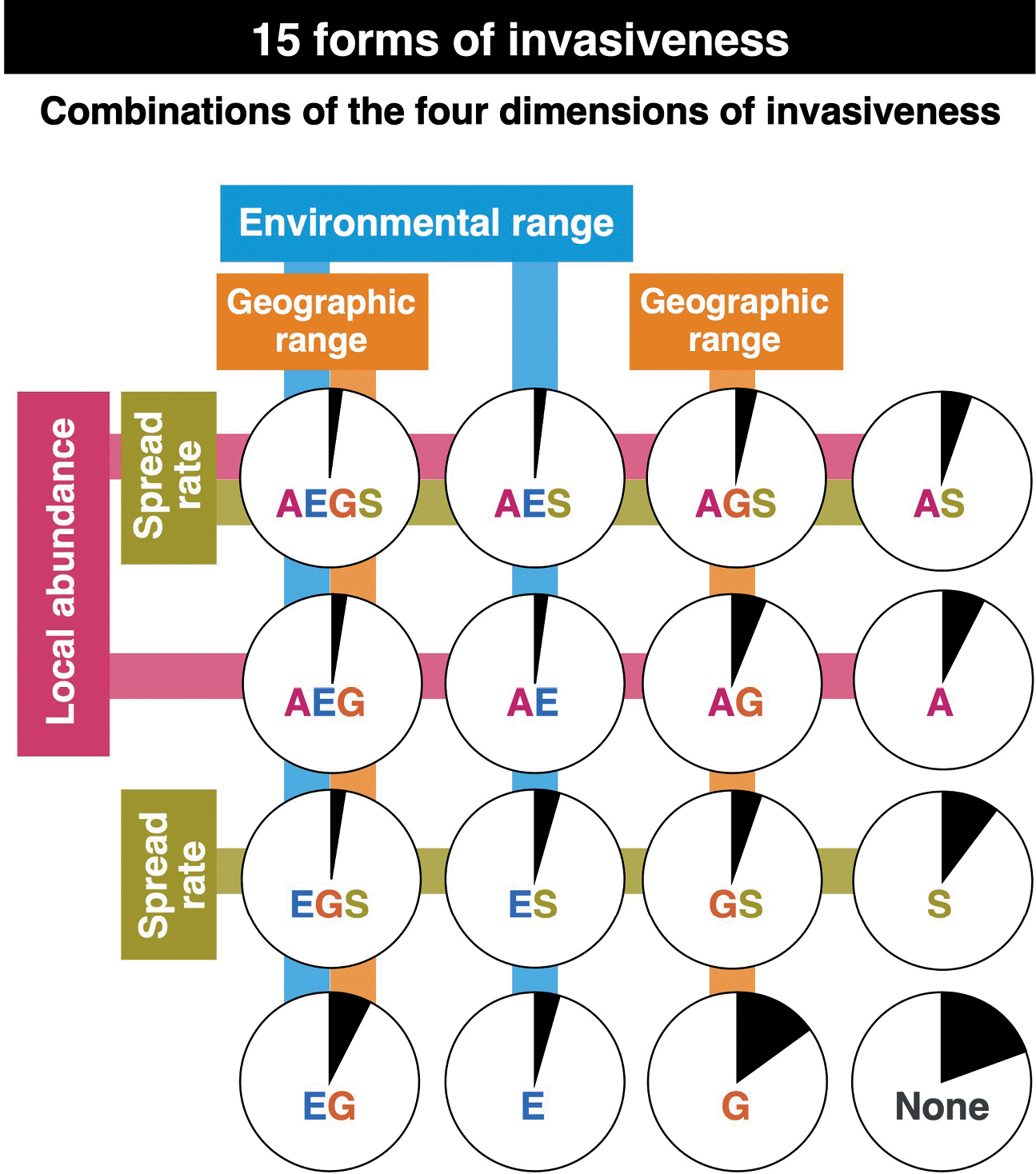
|
||
|
Proportion of 322 trait-based studies that classify invasive seaweed species into 15 forms of invasiveness, based on the dimensions of invasiveness (local abundance, geographic range size, environmental range size and spread rate) and their combinations, as described in Catford et al. (2016). The black portion of each pie chart indicates the proportion of the 322 studies that explicitly used the corresponding criteria to classify the species as invasive, as represented by the letters (where G = geographic range size, E = environmental range size, A = local abundance and S = maximum spread rate). For example, EGS indicates that the dimensions’ environmental range size, geographic range size and maximum spread rate were explicitly used as criteria for invasiveness. None represents studies in which none of the four dimensions of invasiveness were explicitly used as criteria for invasiveness. Figure modified from Catford et al. (2016). |